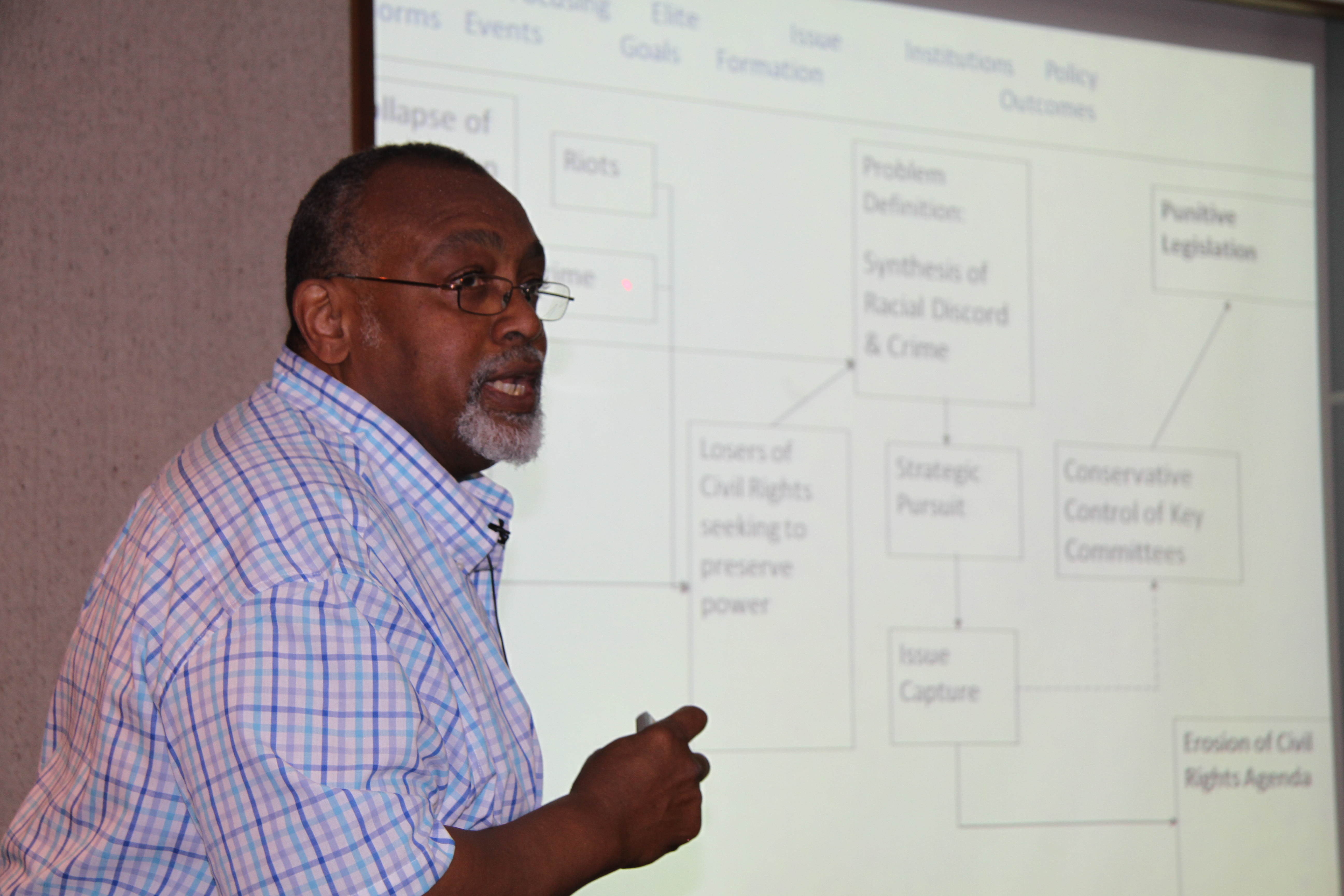
Race, Imprisonment and Inequality in America
- Date 2012-08-01 04:57
- CategoryResearch and Education
- Hit1695


On June 26th KDI School was a proud host to a talk by Professor Glenn Cartman Loury, distinguished Brown University Professor of Economics. Professor Loury shared his interesting findings regarding race, imprisonment and inequality in America over a period stretching from the early 1900s to date. The program attracted a large audience, with Dean Nam also finding time to listen to what turned out to be a very intriguing and interactive lecture.
Prof. Loury began his talk by first outlining the incarceration trends in the early 1900s and showed a particular exponential jump in the late 70s. Even more interesting was the clear disparity between the number of incarcerated black Americans and that of whites, with the data indicating around six blacks imprisoned for every white prisoner. Given that there are more white Americans than blacks, it was clear that the imprisonment rates disproportionally represent the country’s demographics.
Comparing the general incarceration rates in the US against those of other developed countries, Prof. Loury noted that the United States shows over six times higher incarceration rates than that of the second highest UK. “A country of jailors,” he jokingly referred to the United States.
He went on to show some of the effects of this high rate of incarceration among the black Americans, pointing out that in the States where convicts are debarred from voting, a significant percentage of the population was being disenfranchised. This was epitomised by the example of the 2000 elections when George Bush won by a slim margin in the state of Florida. Prof. Loury speculated that had the eight percent of disenfranchised convicts voted, the outcome of the election would have been different. It was further noted that the upsurge in the racial disparity in American incarceration rates was especially sharp in the immediate aftermath of the civil rights movement’s success in the late 70s.
In view of this, Professor Loury suggested that it was time to explore different ways of preventing and containing crime. To try and find solutions, he is currently serving on a committee of academics that are studying the causes and consequences of the high rate of incarceration with a view to making policy recommendations.
The presentation then moved to a Q&A session. The questions ranged from what having a black president portended for the society’s perception of black people to looking at different models from other countries that had dealt with similar issues. The Korean experience with migrant workers was also touched upon.
Students that attended the lecture appreciated their newly earned perspective on American society. “The presentation was really good and showed that like all countries America still faces a challenge,” Nalla Diawara (2012 MDP, Mozambique) commented. She was particularly impressed with the clear illustrations of the problem that remains mostly hidden to non-Americans. Dawit Ayele (2012 MDP, Ethiopia) lamented that such racial discrepancies should still exist in this age. “It’s a relief, though, that solutions were being sought for,” he added. Like every good lecture, Dr. Loury’s talk left the audience with lots of food for thoughts.
By Keith HAMASUTE (2012 MPP, Zambia)
Related News
-
Research and Education9 days ago
Republic of Korea Economic Bulletin, May 2024#KDI #Economic #KDISCHOOL #kdischool #Economic Bulletin #Research
-
Research and Education37 days ago
Republic of Korea Economic Bulletin, April 2024#KDI #Economic #KDISCHOOL #kdischool #Economic Bulletin #Research
-
Research and Education65 days ago
Republic of Korea Economic Bulletin, March 2024#KDI #Economic #KDISCHOOL #kdischool #Economic Bulletin #Research
